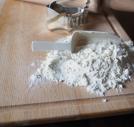Help Your Child Manage Diabetes at School
The new school year is just around the corner, and if your child is diabetic, your anxieties about the first day can be more overwhelming than for most parents.
Here are a couple of tips to keep in mind when you are getting ready for that first day of school:
Collaborate with Your Child's School
Know that the nurses, teachers and coaches at school can work with you on managing your child's diabetes. Try to meet with staff early in the school year to learn more about how the school helps students care for diabetes and how it handles any diabetes-related emergencies.
Remember that public schools and schools that receive federal funding are prohibited from discriminating against people with diabetes by the Americans with Disabilities Act, the Individuals with Disabilities Education Act and Section 504 of the Rehabilitation Act of 1973.
Furthermore, you can also work with your child's doctor and school to create a diabetes management plan. Coming up with a plan can help your child and school staff to better manage his or her diabetes while at school.
Include all pertinent information about what your child might need assistance with when you write up your plan, such as helping your child take medication, checking blood sugar levels, choosing healthy foods for lunch and making sure he or she stays physically active.
Pack All Necessary Supplies
Make sure you have packed all of the necessary supplies that your child will need to manage his or her diabetes and to treat any episode of high or low blood sugar. Work with your child on creating a care package that he or she can carry in a backpack.
Here are some supplies you should include:
- Blood glucose meter, testing strips, lancets and extra batteries for the meter
- Ketone testing supplies
- Insulin and syringes/pens
- Antiseptic wipes
- Water
- If your child uses an insulin pump, make sure to pack backup insulin and syringes/pens in case of pump failure
- Glucose tablets or other fast-acting glucose snacks, which will raise blood glucose levels relatively quickly when eaten. Some examples are 3 to 5 pieces of hard candy, 4 to 6 ounces of orange juice, 2 tablespoons of raisins or 8 ounces of nonfat or low-fat milk.
Additionally, ensure that school workers have a glucagon emergency kit on hand and that they know how to use it in the case of a low blood sugar emergency.
Teach Your Child About Diabetes Management
If your child is old enough to monitor his or her blood sugar, make sure that he or she feels comfortable doing so. If a trained school employee will be checking his or her blood pressure, be sure your child knows the time and place of testing. Lastly, be sure that your child knows who to go to for help in case of an emergency.
Encourage Healthy Food Choices
If you are packing your child's lunch, pack a healthy meal that contains whole grains, fresh fruits and vegetables. Use low-fat options, like low-fat turkey, reduced-fat cheese and skim milk. Provide your child with healthy snacks he or she can turn to later in the day such as fruit, nuts or seeds.
If your child is gong to buy meals at school, look at the cafeteria menus together to help him or her make choices that fit his or her diabetic meal plan. If this information cannot be accessed through the school website, you can request it from school workers.
Physical Activity
Having diabetes should not keep your child from being physically active or from participating in physical education classes. Being active can help your child better his or her blood sugar control. Play with your child and encourage him or her to be active throughout the day by doing things together like walking the dog, riding a bike or playing a sport.
Source: CDC.gov


































